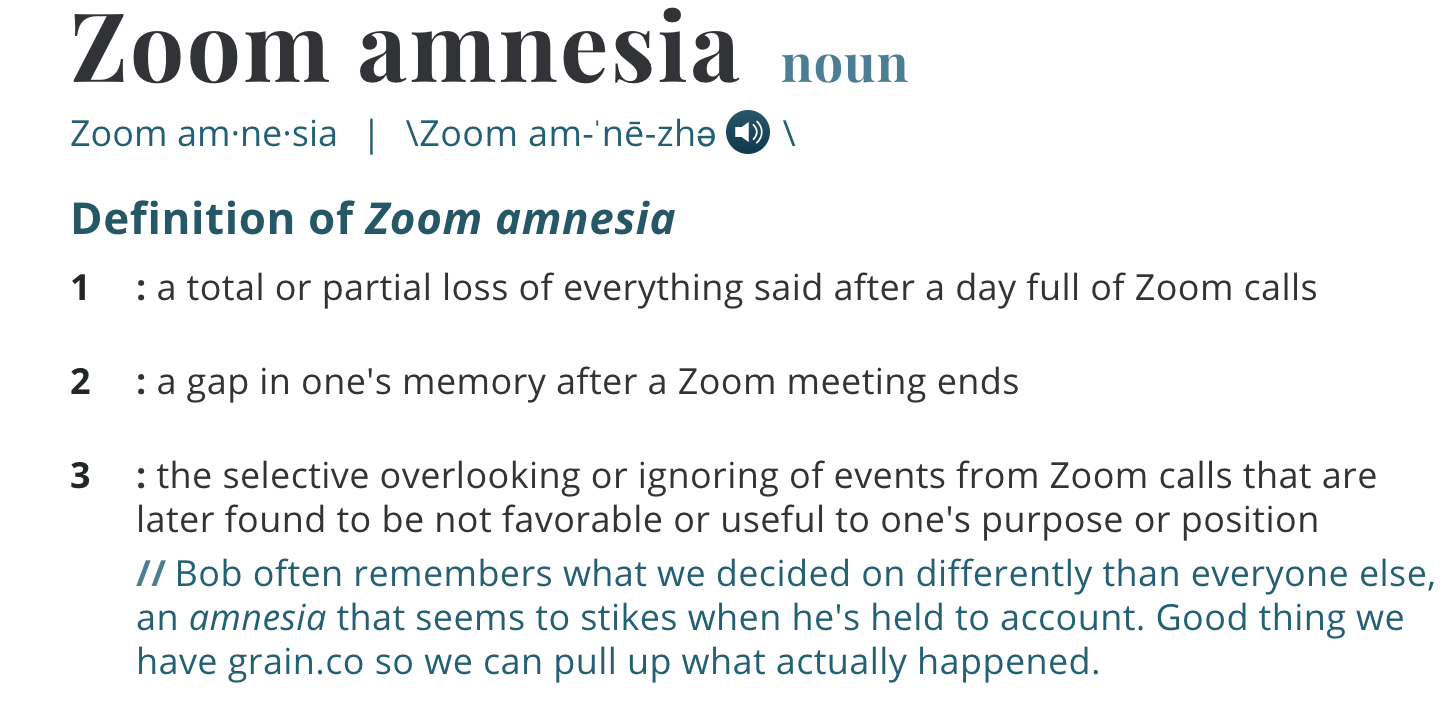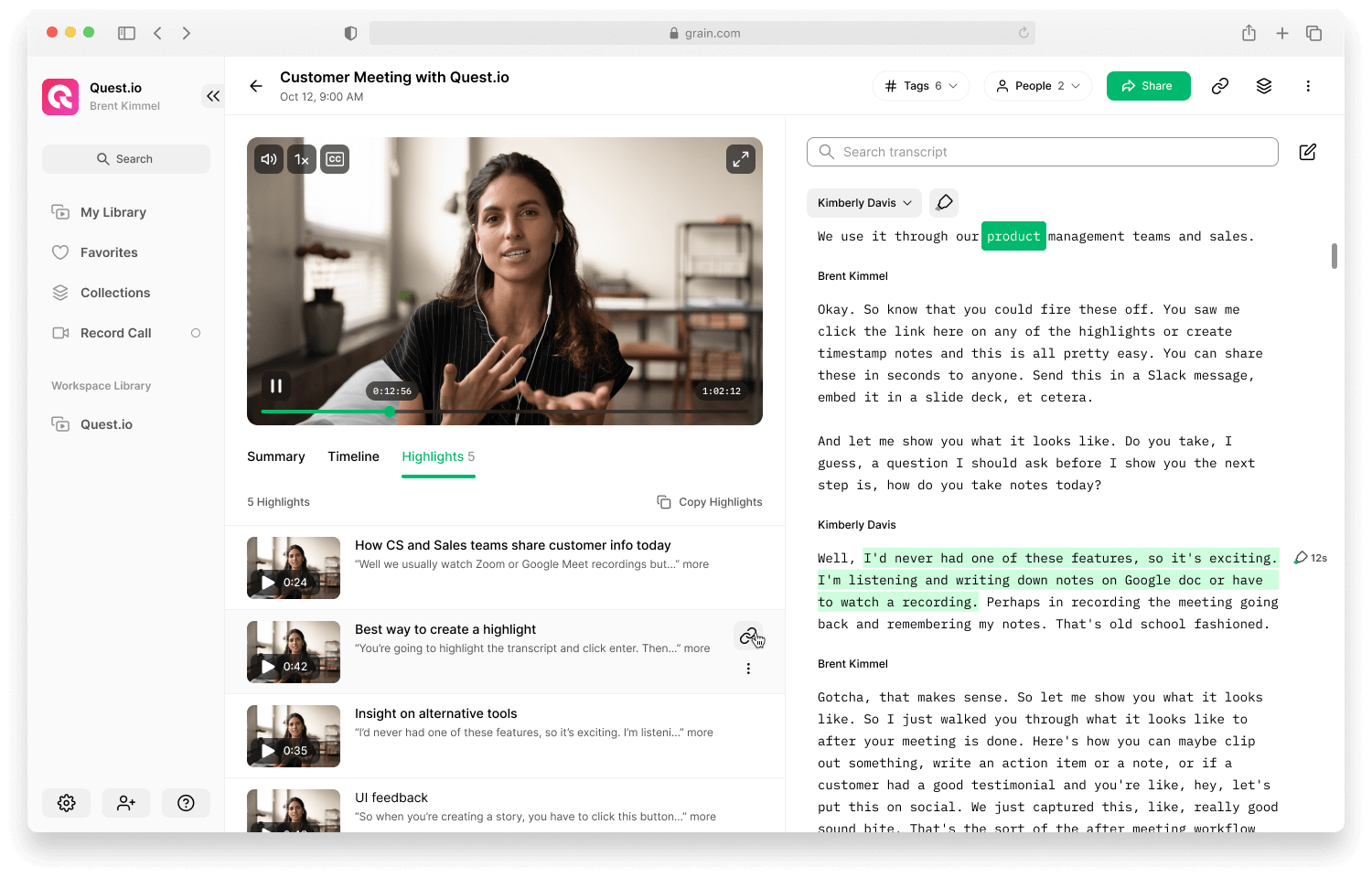How to Take Better Meeting Notes
In today’s remote working world, meetings decide the fate of your business. If you think it’s an exaggeration, let’s think about how we run our teams, understand target customers, and build products. Spoiler alert, we rely on meeting and meeting notes.
- You run an all-hands to align the teams and ensure everyone’s working towards the same goal—the north-star metric.
- You schedule meetings with your potential customers and power users to understand why they need your product and how they are using it to solve their problems.
- Your product team gets together on a Zoom call to plan and fix the bugs, prioritize the right features based on customer feedback, and update the product roadmap.
- Your marketing & sales team have recurring meetings to stay on track and decide the best actions for the next week/month to hit the revenue target.
So, from understanding the customers to hitting the desired ARR, your meetings play quite an important role. But wait, how productive are your meetings? At the end of the day, if your team thinks that “meetings aren’t really actionable” or “we never end up doing things as discussed over a meeting”, then you have to address it first.
To save your time, we’ll give away the most common reason behind unproductive meetings—“zoom amnesia”.

Today every meeting has an agenda and we run through it, discuss & decide the action items, and make decisions. But if you don’t remember what’s been discussed and decided, then you can’t “work” on them—leaving meetings a roundup of discussions that’s not useful in any way. Having an agenda can’t fix the problem.
To put it another way, what you ‘take out of your meetings’ and ‘how you use the insights' impacts the perception of meetings! So, it’s no wonder why taking notes during meetings is super important! It’s an essential part of your meeting and you should ensure you have a system in place to record meeting notes; not just a notepad and a pen.
And, that’s what we’re going to do here—help you build a note taking system that fits your needs.
What are Meeting Notes?
While it sounds obvious, we’ve seen people conflating meeting notes and meeting agenda. So, we’ll start from the basics but feel free to skip it.
Meeting notes aren't an agenda to help you bring up and discuss everything you want to cover in a session. Meeting notes are what you want to take away—action items, decisions, ideas, and important moments from the meeting.
Throughout the meeting, you’re likely to come across deliverables, decisions, and moments that you would want to remember so that you can take the necessary actions once the meeting’s over. Meeting notes helps you document them and acts as your source of reference.
Sidenote: Looking to formally document what happened during the meeting? Try learning how to take better meeting minutes.
Why Do You Need to Take Meeting Notes?
1. To Make Your Meetings Meaningful!
We all have Zoom amnesia. For instance, you must’ve been in a moment during a meeting where you intentionally decided to remember something for the next day. But the next day, you can’t recall it. There’s a good chance you completely lost what you specifically want to remember.
It’s not uncommon. Humans don’t retain much information from meetings. Our memory isn’t the best bet; it’s far from it.
Hermann Ebbinghaus, a german psychologist, known for his discoveries related to human memory, concluded that we all begin to forget the information soon after acquiring it.

Within an hour, people will have forgotten an average of 50% of the information shared during meetings! To emphasize, that’s half of what you discussed gone—in just an hour!
He named the phenomenon ‘Forgetting curve’ and it still holds true, especially in this age of information abundance.
As a quick exercise, let’s try to recall the deliverables from your last weekly team meetings. How much can you recollect? So, put simply, to make your meetings meaningful, you need to start taking notes.
2. To Improve Your Meetings
Let’s go back in time and see how you’ve conducted your meetings—whether they are with your users (external) or team members (internal). You can easily notice how far you have come from the early days. The way you collaborate over meetings, discuss the agenda, and take in and respond to feedback have improved a lot, right?
This doesn’t happen on its own. You deliberately took the effort to see what’s wrong and improve the meetings over time. With the help of meeting notes, you’re supercharging the process.
You can take note of the moments that should be improved and jot down a line briefing how you can improve it. Do it for a couple of meetings and then you have a handful of improvements to deploy to make your meetings more effective and useful to everyone involved.
3. To Improve Your Performance
No one wants to stay where they are now. We all want to perform better at work so that we can have peaceful evenings and weekends. If you work in an environment where ‘time’ is more scarce than anything else (aka startups), then your meetings are where you need to be at your best—to capture the moments, deliverables, pitch in ideas, and take feedback.
And, taking and organizing notes is the only way to do so, not your memory dumps. You'll eventually have an opportunity to unearth gaps and ideas to improve your work.
How to take Meeting Notes Without Losing the Context?
Taking notes isn’t about randomly jotting down the discussions during a meeting. Like anything at work, there’s a default way and then there’s a better way.
Default way:
While there’s nothing wrong with using a pen and paper to take notes whenever you feel like it, it’s not easy to
- It’s difficult to understand the context. Your notes aren’t associated with the meeting in any way. It lives separately in, well, a paper. Even the one who takes the meeting notes can’t get the complete context after a week let alone others in your team.
- It’s difficult to process and share the insights. You can’t easily share notes or ideas with others in your team even if it’s meant for them.
- You can’t look for opportunities to improve. You can’t spot a trend nor look for ways to improve collaboration. More specifically, the way you organize meeting notes doesn’t allow you to.
- You can’t preserve the knowledge. Your meetings are where most of the knowledge gets shared and you can’t preserve it with a pen and paper.
Better way:
Alright, let’s learn how to effectively take notes without losing the context. It involves five steps:
- Know the Agenda
- Prepare Your Pitch
- Take Note of Important Moments
- Create Tasks for Deliverables
- Capture the Insights
To make it actionable, open your calendar, pick your next meeting where you want to take notes, and tag along. Shall we begin?
1. Know the Agenda
You can use the agenda to give structure to your notes. Meeting agenda has the top-level topics and your meeting notes can be the sub-level items—deliverables, tasks, decisions, ideas, etc.
Example:
Product Hunt Launch (Agenda)
- Planned to launch on 15th Aug 📅
- Copy and creatives are ready to go 🆗
- Antoine to add Product Hunt badge on marketing site ✅
- Marketing idea XYZ 💡
Do you have a planned agenda in your meeting? If not, try putting together an agenda before moving on to the next step.
2. Prepare Your Questions
As you now know the agenda, you can prepare what you would like to share — be it questions, ideas, or feedback. The reason to prepare is to not just to share but also to capture.
When you ask questions in a user interview, the responses can influence your pricing and product roadmap. When you pitch an aspirational project to your team, the responses can help you prioritize and decide the next steps.
Preparing what you want to share—helps you create necessary time to take notes better.
Imagine an important discussion going towards multiple directions while you’re trying to pay attention, contribute, and take notes. Now, compare this to taking notes while you deliver the questions and wait for the answers.
If you haven’t already, prepare what you need to share in your next meeting.
Meeting note templates:
Can meeting note templates help? It can but only for certain roles and interviews. Let’s say you are a product manager doing user research interviews, you’re likely to rely on the same set of questions. In such cases, it’s worth creating a template and improving it over time.
If you onboard customers, then meeting note templates can come in handy. So, based on what your goal is, you can create and leverage templates. If not, it’s not necessary to rely on templated documents.
While agenda and preparation comes before the meeting starts, they greatly influence how you take meeting notes.
3. Take Note of Important Moments
Throughout the meeting, take note of the important moments. Interesting ideas, mentions of potential partners, decisions, and outcomes, take note of everything you would want to remember and get back to—after the meeting.
Ideally, you would want to preserve both your meeting notes and recording file so that you can get back to it at a later point in time.
We use Grain for our meetings (of course!). Grain allows our team to collaboratively annotate meetings in real-time to create video clips that capture both the moment and the note.
It’s not just easy to capture meeting notes but also share them.

Grain automatically records, transcribes, and uploads the meetings (along with the annotations) to a Grain Workspace — shared between our team members.
By logging into our Grain workspace, we can get back to any moment in the meeting, get the complete context, and see the accompanying notes as well. So, no ideas are ever lost.

If you prefer to do it manually, ensure:
- Your meeting is recorded.
- Your notes are time-stamped.
Manually taking notes and recording the meeting using Zoom means your recording file and notes will live separately and there’s no way to share them together with the rest of your team. More importantly, it’s hard to organize and look for information once you hit a handful of recordings.
Leveraging a specialized tool like Grain is always better. The added benefit is that you can build a customized system for yourself to take notes during meetings!
4. Create Tasks for Deliverables
Meetings are where we discuss and plan the next steps and so, you’re likely to come across tasks quite often. Rather than relying on your memory, build a workflow to upload your task to the team’s project management system.
Many underestimate the importance of transferring the deliverables to the project management system as soon as possible. If you have it on your notes but not on the to-do, then there’s no point. Tasks are supposed to be in your project management tool, not just on a note-taking tool.
There are a few ways to do it:
1. Jot down the tasks and respective DRIs (directly responsible persons) as you go. Having it written down means you don’t have to remember the action item and who owns it .
2. As Zoom recently launched Zoom Apps, it has become easier to integrate other work tools into Zoom meetings. If you use Asana, you can use its Zoom App to create the tasks during the meeting.
3. If you don’t use Asana or tend to use a couple of tools at once (eng. team can prefer one, marketing can use one, etc), leverage Grain + Zapier to automatically create tasks in the preferred project management systems. Once you connect Grain and Zapier, it’s just a matter of choosing an emoji. For instance, whenever we drop a ticket emoji 🎟️ in Grain notepad, an issue will be automatically created on Linear with the highlight clip attached for context.
4. Assign someone in your meeting to create tasks as the meeting progresses. It’s far better than waiting till all your meetings are over and then getting to the deliverables at the end of the day.
Sidenote: Tasks or deliverables can live in your meeting notes. But they should be uploaded to the project management system as well.
5. Capture the Insights
More often than not, your meeting notes are meant to be shared internally. You need to ensure you are capturing the insights without losing the context—so that the notes make sense even for those who couldn’t attend the meeting.
Meeting notes aren’t self-explanatory unless you weave it with the video clip. So, when we want to capture and share insights, we’ll just create a Grain highlight and then share it with others. No one wants to watch a full recording but everyone likes to watch a clip that’s specifically created for them.
Alternative is to do a write-up for everyone once the meeting is over. As you already have captured the important information (step 3), you can use the same to write a meeting recap.
Best Way to Take and Organize Meeting Notes
As we hinted earlier, meeting notes aren’t just about a specific meeting. You can find interesting patterns and opportunities to improve your work and the way you collaborate over meetings.
But it’s only possible if you build a repository to organize meeting notes and the way to build a repository is to record and transcribe your meetings—not to just rely on ‘meeting notes’ that lives separately and fails to provide the context.
As more teams are working remotely and rely on Zoom meetings to communicate and make important decisions, the idea of preserving spoken conversations and knowledge is gaining momentum.

Sign up for Grain to level up the way you take meeting notes and share insights!



.png)



